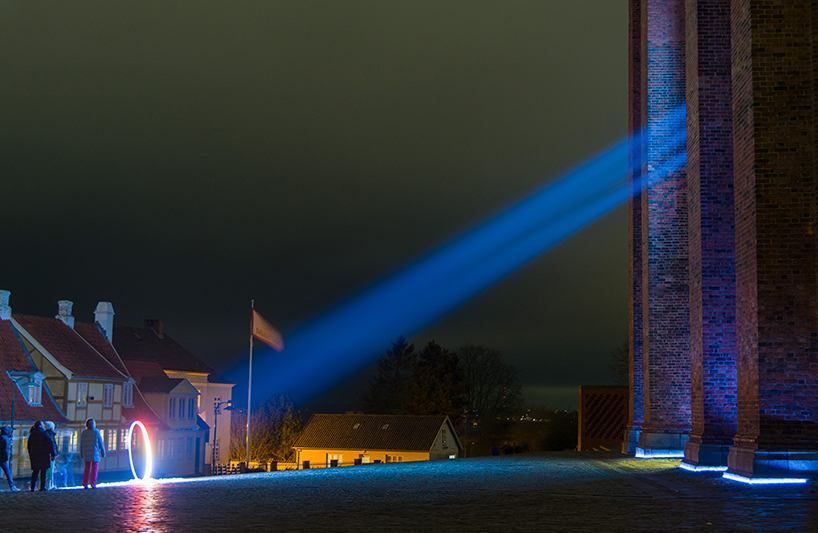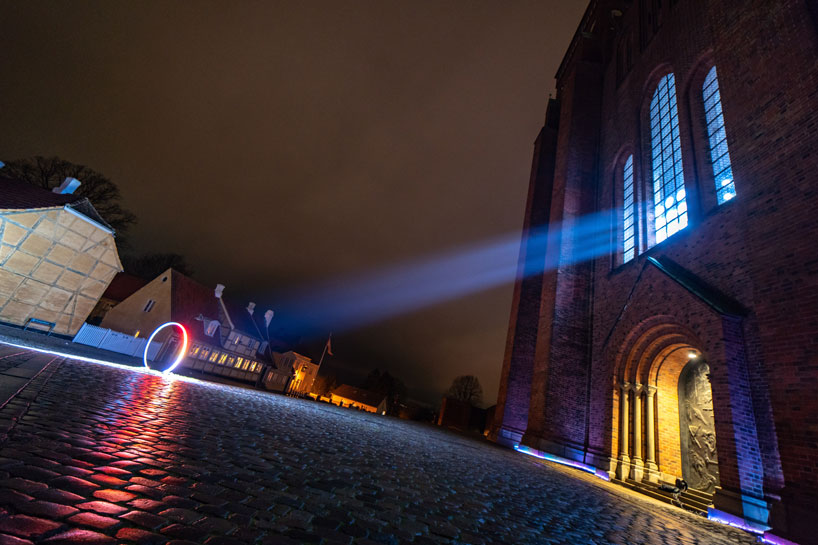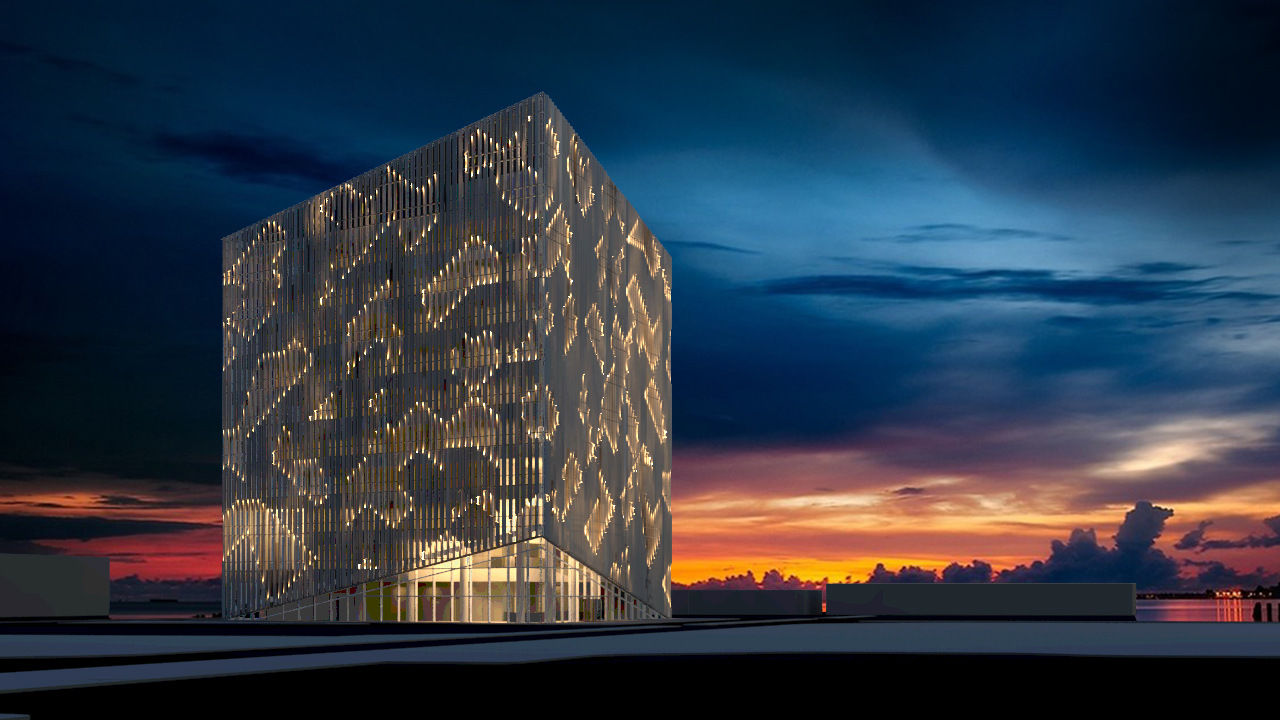Discover how the old Gothic idea of “New Light” is being revived by contemporary technology and what this means for architecture, art, and spirituality today.
Although light has a long history in art, few ideas have as much historical significance as “Lux Nova”—Latin for “New Light.” It was the primary intellectual inspiration for Gothic architecture and was first used in the 12th century by Abbot Suger of the Basilica of Saint-Denis.
It was the ground-breaking notion that stained glass windows were divine conduits rather than merely pictures, converting ordinary sunshine into a magical, spiritual experience.
The essence of Lux Nova is undergoing a significant technological redesign as our world grows more and more reliant on screens and digital projection. We are seeing the emergence of Digital Stained Glass, a movement that blends modern technology with the medieval respect for light.
This voyage involves a profound philosophical confrontation with the cult of pure light—the human longing to experience the divine through illumination—and goes beyond a mere creative fad. The objective is the same whether the vivid pixels of a contemporary LED work or the jeweled tones of Chartres: to employ light, filtered and changed, to take the observer to a another state of being. The medium is the only thing that has changed.

Abbot Suger of the Basilica of Saint-Denis. Rose window, Credit; Wikimedia user Diliff
The Magnificence of History: Abbot Suger and the First Lux Nova
The first Lux Nova was a theology of architecture. In his attempt to restore the gloomy, antiquated Basilica of Saint-Denis, which dates back to the Carolingian period, Abbot Suger had an idea for a building that would uplift the soul with beauty and light. His famous goal was to cover the entire chapel with “precious windows,” as he felt that the beauty of the tangible world may inspire the soul to reflect on the beauty of the spiritual world.
The stained glass that was produced was more than just ornamental. The harsh outside light was diffused and colored by the thick lead lines and highly saturated glass, which served as a visual filter. This changed light, which was pure and intangible but illuminated all it touched, was regarded as a metaphor for God. Lux Nova became the defining feature of the entire Gothic movement throughout France and Europe as a result of the rapid dissemination of this creative and spiritual concept. Using technology (the art of glassmaking and sophisticated rib vaulting) to enable a spiritual, transcendent experience was an idea that was by its very nature radical.
Thousands of pieces of colored glass had to be cut, painted, and assembled by highly experienced artists in the laborious process of medieval art. The goal of this time, money, and faith investment was to establish a sacred environment that would last. Its tangible presence and stillness—the weight of history infused in the glass itself—are what give it its lasting power.
Cathedral of Chartres or the Basilica of Saint-Denis
The Medium Transition: Pixels and Code to Lead and Glass
Transformation through a filter is the core concept of Lux Nova. The digital interface is the 21st-century counterpart of the lead-and-glass framework. The artisan’s crucible has been replaced by the pixel, the LED, and the projector. This change aims to translate stained glass’s fundamental theory of light transformation into a fresh, dynamic medium rather than copying it.
Digital Stained Glass is a new field that creates elaborate, glowing images using video projection, programmable lighting, and large LED installations. The digital form is dynamic in contrast to traditional glass, which is static. Depending on the time of day, outside information, or even the presence of the spectator, it can instantly alter color, motion, and pattern. This creates a layer of kinetic energy that enhances the perception of “new light.”

Dan Flavin’s installation at the Chiesa di Santa Maria Annunciata in Chiesa Rossa church in Milan, Italy (Creative Commons License from Wikimedia Commons)
Methods and Uses in Architecture
In architectural environments, the most compelling uses are frequently observed. Through the use of projection mapping, artists can temporarily turn old churches or modern structures into glowing temples by superimposing intricate, moving stained-glass images onto their exterior. Massive, translucent LED panels that filter light with programmable, high-definition art are being installed in interior spaces to create a light display that is both contemporary and profoundly respectful of historical form. These days, artists are successfully using light to paint in four dimensions: color, space, time, and interaction.
In order to create a dynamic, temporal interaction with the surrounding environment, an artist can program a digital “rose window” to slowly change its hues from the cold blues of dawn to the flaming reds of sunset. This is something that the medieval craftsmen could not accomplish. An impressive development of the original Lux Nova concept is this ability to interact with natural time.

‘LUX NOVA’ beams a circle of light outside roskilde cathedral in denmark Credit: .designboom.com
The ‘Cult’ of New Light: Contemporary Significance and Search Engine Optimization
The original title’s use of the phrase “Cult of Pure Light” alludes to the Gothic builders’ near-compulsive obsession with attaining this flawless, holy illumination. This “cult” in our digital age takes the form of a distinct, frequently more secular need for emotionally compelling, immersive settings—the search for the transcendent experience in modern settings.
Digital light art has gained international recognition, leading to a significant increase in search volume for terms such as “Light Art Festivals” and “Interactive Installations.” Millions attend events like Vivid Sydney and Lyon’s Fête des Lumières, demonstrating the continued public interest in transformative, pure light. Similar to the medieval church’s social and spiritual role, these installations serve as transient cathedrals of light, places where people congregate for a shared, emotional experience.

‘LUX NOVA’ beams a circle of light outside roskilde cathedral in denmark Credit: .designboom.com
Connecting the Past with Modern Technology
Engaging with the Lux Nova topic is a high-density search volume potential for companies and cultural institutions. People who search for “digital art architecture,” “light installations,” and “future of sacred art” are drawn to content that ties a deep, well-researched historical narrative with the high-tech present. Cutting-edge technology (LED, Projection Mapping) combined with art history (Gothic, Abbot Suger) creates engaging, highly shareable material that ranks well.
‘LUX NOVA’ Siiku
Purity, Durability, and Presence’s Future
Conventional stained glass had permanence; it was set, requiring only one, permanent interaction. Digital light is dynamic and transient by nature. A crucial philosophical dilemma is brought up by this discrepancy: Can digital light, which is incredibly malleable and reproducible, really attain the purity of Lux Nova?
Abbot Suger believed that the purity resulted from the light passing through holy objects. The accuracy of control is the source of purity in the digital world. With a degree of precision that medieval craftspeople could only imagine, the artist is able to program the precise color, intensity, and movement. The mathematically flawless execution of the artist’s vision, provided by code and high-resolution projection, is the “purity” rather than the material (glass).
Additionally, interactive elements are frequently incorporated into digital light installations. By moving or contributing, the viewer transforms from a passive recipient of divine light into an active participant whose actions alter the hue and design of the “stained glass.” As a result, the Cult of Pure Light becomes a bottom-up, individualized, and democratized religious experience rather than a top-down one. It is just more relevant to a contemporary, participatory audience and more intimate, but the experience is still sublime.
Conclusion: Infinite, Light, and Reborn
This modern conversation between tradition and innovation is aptly captured in the title, “Lux Nova” in the Digital Age: Rethinking Stained Glass and Sacred Light with Technology. Artists are drastically extending the heritage of Gothic stained glass rather than erasing it by employing the resources of the digital age. The enthusiasm for light as a heavenly, transformational force—the central religious and artistic impulse that characterized the Middle Ages—is being revived.
This trend is evidence that the basic human desire for emotional and spiritual uplift by light never goes away. Through the creation of transient, magnificent havens of colored light in our glass and concrete cities, digital stained glass provides a means of viewing the past through the prism of the future.
The experience is universally human, whether one is standing in front of a tall façade that is animated by a dynamic 4K projector or is surrounded by the sapphire blues and ruby reds of an 800-year-old rose window. It’s the New Light. It brings the ageless promise of transcendence into every secular and religious area it comes into contact with. It is endless, programmable, and interactive. The religion of pure light will shine brighter than ever thanks to the arrival of the digital stained glass.
For more blogs like this CLICK HERE!!
Reference:
Lux Nova Partners | Specialist Clean Energy Lawyers
LUX NOVA by SIIKU beams a circle of light outside roskilde cathedral





